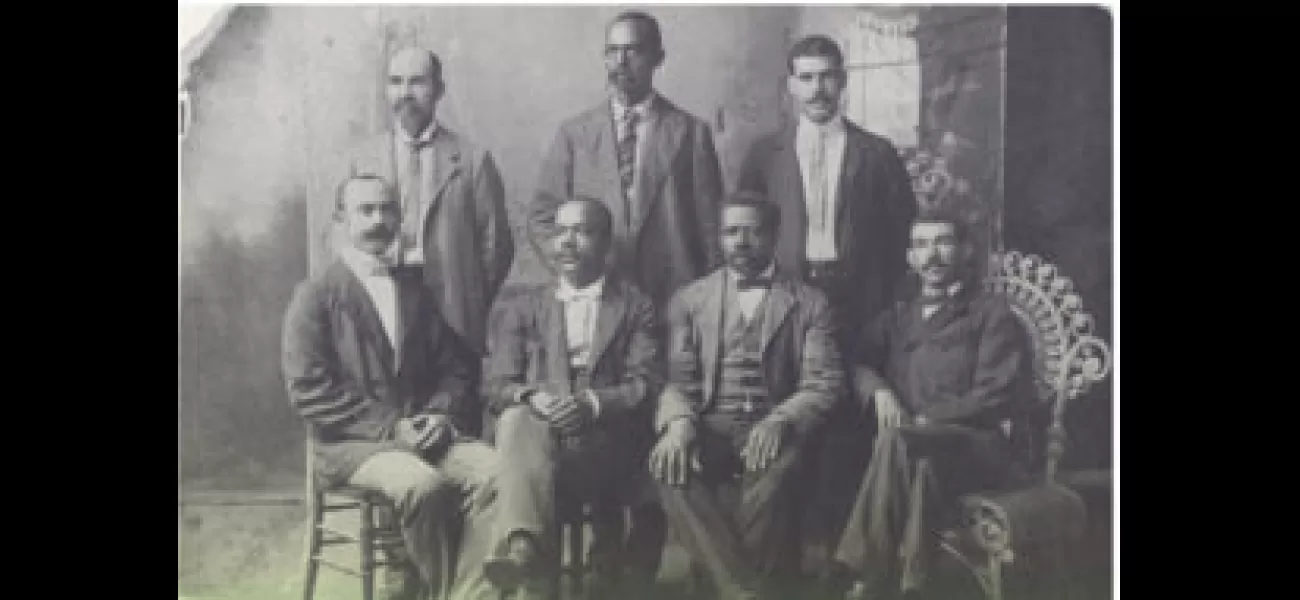Black banks have been a source of economic self-determination for African Americans since 1930.
Explore the development of Black banking from the 1930s to the present day.
June 17th 2023.

In the wake of the Freedman’s Savings Bank’s collapse and the Panic of 1873, African Americans sought to gain financial freedom through the establishment of Black banks. It was the Black churches, mutual aid societies, and fraternal organizations that served as the bedrock of the Black community and provided the capital for the budding Black banking industry. This collective effort catered to the needs of the African American population and created a thriving economy.
The first generation of Black bankers worked hard to prove their worth to their community. The Nashville Globe reported in 1910 that not a single failure was chalked up to a Black bank during the Banker’s Panic of 1907. This was a testament to the resilience of the African American banking enterprise. From Maryland to Mississippi, Black banks began to appear throughout the urban landscape of the South. In 1909, Mississippi’s Black banks saw an increase in total assets from $50,000 to an impressive $750,000.
The names of these banks, like One Cent Savings Bank in Nashville, Solvent Savings in Memphis, and People’s Investment in Birmingham, evoked purpose and resilience. Capital Savings Bank of Washington D.C. was the first Black bank conceived and operated by African Americans and within four years, their deposits had ballooned to $300,000. The True Reformers Bank of Richmond was established by Rev. William Washington Browne, a former slave and Union Army officer, in response to racism and a lynching in Charlotte County.
The North Carolina Mutual Life Insurance Company was founded in 1898 and by 1910, it had amassed a quarter of a million dollars in revenue. It is still one of the oldest and most successful Black-owned insurance companies in the United States. The National Negro Business League was established by Booker T. Washington in 1900 and had 600 chapters throughout the nation by 1912.
The Colorado Statesman newspaper reported that Black bankers were “about the safest bankers on earth” and that they had more to gain by being honest and more to lose by being dishonest than any other class of bankers. The National Negro Bankers Association, established in 1924, held annual meetings for Black bankers to exchange information on how to foster cooperation between Black businesses and banks.
The legacy of Black banks stands as a testament to the hard work and resilience of the African American community. Through collaboration and determination, these banks have fostered wealth and financial knowledge within the Black community. As Richard Wright Sr. and Charles C. Spaulding said, “Let us put our moneys together”, and it is this ethos that has enabled the success of Black banks throughout the years.
The history of Black banks from 1830 to the present is an inspiring story of resilience and determination. Despite the failure of the Freedman's Savings Bank and the Panic of 1873, Black banks continued to be established and grow throughout the United States. Black churches, mutual aid societies, and fraternal organizations provided the necessary capital and supported the growth of Black businesses.
Black banks of the early 20th century had names that evoked purpose and resilience – One Cent Savings Bank in Nashville, Solvent Savings in Memphis, People's Investment in Birmingham, and the Star of Zion Banking and Loans Association in Salem, Virginia. These banks provided the much-needed financial services that white-owned establishments had withheld from Black communities.
The Capital Savings Bank, established in 1888 in Washington, D.C., was the first bank owned and operated by African Americans. It was soon followed by the True Reformers Bank of Richmond, founded by Rev. William Washington Browne. The Mutual Bank and Trust Company of Chattanooga, Alabama Penny Savings Bank of Birmingham, and the North Carolina Mutual Life Insurance Company were established soon after and would become some of the most prominent Black-owned banks in the United States.
The National Negro Business League, founded by Booker T. Washington in 1900, provided unwavering support to Black entrepreneurs. By 1912, 64 Black banks were doing annual business of about $20 million and had earned the trust of their communities. The National Negro Bankers Association was established in 1924 to foster cooperation between Black businesses and banks.
The Colorado Statesman newspaper said, “The Negro banker is about the safest banker on earth. He knows that strong forces are against him, not because he’s a Negro, but because he is a competitor in the sanctum sanctorum of modern power.”
The story of Black banks is a testament to the determination and resilience of African Americans in the face of adversity. Black banks have been the bedrock of Black communities, providing access to much-needed financial services and fostering wealth for generations. As William Washington Browne said, “Let us put our moneys together.”
The first generation of Black bankers worked hard to prove their worth to their community. The Nashville Globe reported in 1910 that not a single failure was chalked up to a Black bank during the Banker’s Panic of 1907. This was a testament to the resilience of the African American banking enterprise. From Maryland to Mississippi, Black banks began to appear throughout the urban landscape of the South. In 1909, Mississippi’s Black banks saw an increase in total assets from $50,000 to an impressive $750,000.
The names of these banks, like One Cent Savings Bank in Nashville, Solvent Savings in Memphis, and People’s Investment in Birmingham, evoked purpose and resilience. Capital Savings Bank of Washington D.C. was the first Black bank conceived and operated by African Americans and within four years, their deposits had ballooned to $300,000. The True Reformers Bank of Richmond was established by Rev. William Washington Browne, a former slave and Union Army officer, in response to racism and a lynching in Charlotte County.
The North Carolina Mutual Life Insurance Company was founded in 1898 and by 1910, it had amassed a quarter of a million dollars in revenue. It is still one of the oldest and most successful Black-owned insurance companies in the United States. The National Negro Business League was established by Booker T. Washington in 1900 and had 600 chapters throughout the nation by 1912.
The Colorado Statesman newspaper reported that Black bankers were “about the safest bankers on earth” and that they had more to gain by being honest and more to lose by being dishonest than any other class of bankers. The National Negro Bankers Association, established in 1924, held annual meetings for Black bankers to exchange information on how to foster cooperation between Black businesses and banks.
The legacy of Black banks stands as a testament to the hard work and resilience of the African American community. Through collaboration and determination, these banks have fostered wealth and financial knowledge within the Black community. As Richard Wright Sr. and Charles C. Spaulding said, “Let us put our moneys together”, and it is this ethos that has enabled the success of Black banks throughout the years.
The history of Black banks from 1830 to the present is an inspiring story of resilience and determination. Despite the failure of the Freedman's Savings Bank and the Panic of 1873, Black banks continued to be established and grow throughout the United States. Black churches, mutual aid societies, and fraternal organizations provided the necessary capital and supported the growth of Black businesses.
Black banks of the early 20th century had names that evoked purpose and resilience – One Cent Savings Bank in Nashville, Solvent Savings in Memphis, People's Investment in Birmingham, and the Star of Zion Banking and Loans Association in Salem, Virginia. These banks provided the much-needed financial services that white-owned establishments had withheld from Black communities.
The Capital Savings Bank, established in 1888 in Washington, D.C., was the first bank owned and operated by African Americans. It was soon followed by the True Reformers Bank of Richmond, founded by Rev. William Washington Browne. The Mutual Bank and Trust Company of Chattanooga, Alabama Penny Savings Bank of Birmingham, and the North Carolina Mutual Life Insurance Company were established soon after and would become some of the most prominent Black-owned banks in the United States.
The National Negro Business League, founded by Booker T. Washington in 1900, provided unwavering support to Black entrepreneurs. By 1912, 64 Black banks were doing annual business of about $20 million and had earned the trust of their communities. The National Negro Bankers Association was established in 1924 to foster cooperation between Black businesses and banks.
The Colorado Statesman newspaper said, “The Negro banker is about the safest banker on earth. He knows that strong forces are against him, not because he’s a Negro, but because he is a competitor in the sanctum sanctorum of modern power.”
The story of Black banks is a testament to the determination and resilience of African Americans in the face of adversity. Black banks have been the bedrock of Black communities, providing access to much-needed financial services and fostering wealth for generations. As William Washington Browne said, “Let us put our moneys together.”
[This article has been trending online recently and has been generated with AI. Your feed is customized.]
[Generative AI is experimental.]
0
0
Submit Comment





